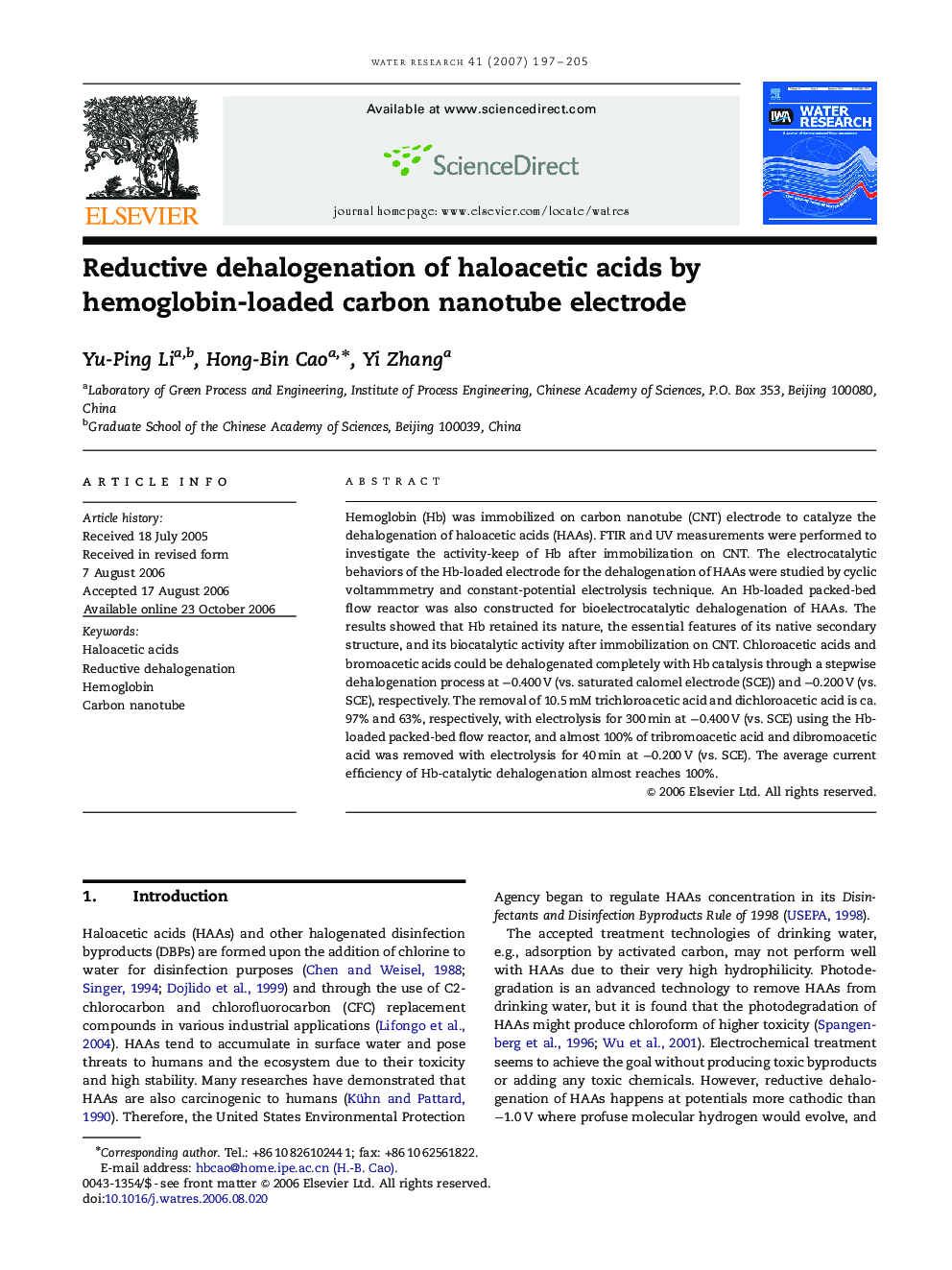| کد مقاله | کد نشریه | سال انتشار | مقاله انگلیسی | نسخه تمام متن |
|---|---|---|---|---|
| 4485676 | 1316961 | 2007 | 9 صفحه PDF | دانلود رایگان |

Hemoglobin (Hb) was immobilized on carbon nanotube (CNT) electrode to catalyze the dehalogenation of haloacetic acids (HAAs). FTIR and UV measurements were performed to investigate the activity-keep of Hb after immobilization on CNT. The electrocatalytic behaviors of the Hb-loaded electrode for the dehalogenation of HAAs were studied by cyclic voltammmetry and constant-potential electrolysis technique. An Hb-loaded packed-bed flow reactor was also constructed for bioelectrocatalytic dehalogenation of HAAs. The results showed that Hb retained its nature, the essential features of its native secondary structure, and its biocatalytic activity after immobilization on CNT. Chloroacetic acids and bromoacetic acids could be dehalogenated completely with Hb catalysis through a stepwise dehalogenation process at −0.400 V (vs. saturated calomel electrode (SCE)) and −0.200 V (vs. SCE), respectively. The removal of 10.5 mM trichloroacetic acid and dichloroacetic acid is ca. 97% and 63%, respectively, with electrolysis for 300 min at −0.400 V (vs. SCE) using the Hb-loaded packed-bed flow reactor, and almost 100% of tribromoacetic acid and dibromoacetic acid was removed with electrolysis for 40 min at −0.200 V (vs. SCE). The average current efficiency of Hb-catalytic dehalogenation almost reaches 100%.
Journal: Water Research - Volume 41, Issue 1, January 2007, Pages 197–205